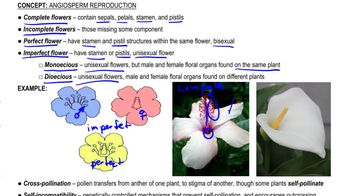Name two kinds of asexual reproduction among plants. Explain two advantages of asexual reproduction over sexual reproduction.
What is the primary drawback of asexual reproduction?
 Verified step by step guidance
Verified step by step guidance Verified video answer for a similar problem:
Verified video answer for a similar problem:



 5:18m
5:18mMaster Alteration of Generations with a bite sized video explanation from Jason
Start learning